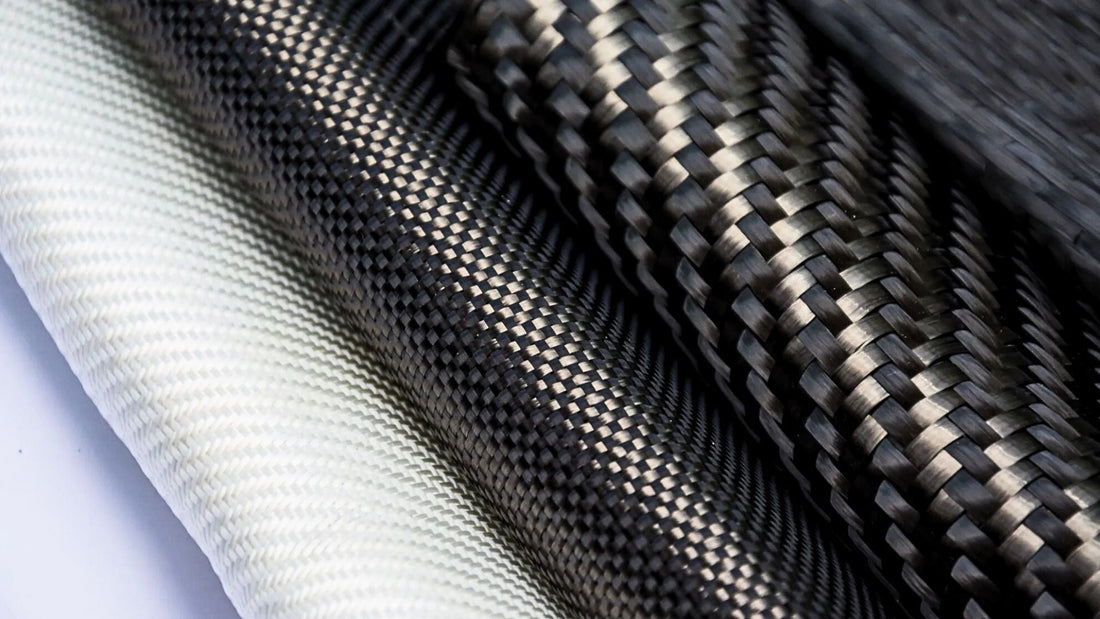
Kevlar vs. Aramid Fiber: What's the Difference?
Share
Aramid Fiber and Kevlar often come up in the conversation of materials that offer exceptional strength, durability, and heat resistance. These two are frequently mentioned in industries ranging from aerospace to military gear and even protective clothing like bulletproof vests. While they are practically the same and interchangeable, they have key distinctions.
In this article, we’ll break down the differences between Kevlar vs. Aramid Fiber in simple terms. We’ll explore their properties and applications and provide answers to the questions addressing their differences.
Table of Content
An Overview of Kevlar vs. Aramid Fiber

Although Kevlar is an aramid fiber, it is not the only type. Aramid refers to a wide range of synthetic fibers that are noted for their excellent strength and heat resistance. It has many uses and applications, including as a material for an Aramid Fiber thin phone case. Kevlar’s unique qualities set it apart from other aramids. Therefore, it’s important to understand how both materials work, where they shine, and where they differ.
Kevlar
Kevlar, previously named para-aramid, is a specific brand of aramid fiber developed by DuPont in the 1960s. All Kevlar are aramid fibers, but not all aramid fibers are Kevlar. Think of it like this: all squares are rectangles, but not all rectangles are squares.
Kevlar has a 50-plus-year history of exceptional strength and protection. Gloves and sleeves made with it provide the most sturdy cut and heat protection. Kevlar is inherently flame-resistant and can sustain temperatures of up to 900°F, which is higher than nylon, leather, and high-performance polyethylene. It will not burn or melt.
Aramid Fiber
Aramid fibers are referred to as high-performance fibers. “Aramid” stands for “Aromatic Polyamide,” a class of heat-resistant and strong synthetic fibers. These synthetic fibers are flame and heat-resistant with a high melting point. They gain strength from the strong bonding of relatively short molecules, which efficiently transfer stress. When it comes to protecting the human body, these durable, high-performance fibers are ideal for bulletproof clothing and, today, for phone cases.
Because of the aramid fiber’s excellent properties, they are used in aerospace, industrial settings, and the military. They are highly valued for their lightweight yet strong properties. Still, they are a broad category of fibers, and that’s where Kevlar comes into play.
Is Kevlar and Aramid Fiber the Same?

Simply put, Kevlar is an aramid fiber. However, it’s a specialized, branded type of aramid. It’s also one of the strongest, making it a top choice for high-impact applications.
🎉 Fun Fact: Kevlar is the trademarked brand name for DuPont's aramid fiber. However, because it was the first para-aramid created, its name is synonymous with the word aramid.
High Strength-to-Weight Ratio
One of the biggest reasons Kevlar and aramid fibers are used in high-performance applications is because they provide incredible strength without adding unnecessary weight.
Kevlar is an excellent choice for bulletproof vests, helmets, and military-grade armor. Its tightly packed molecular structure enhances its tensile strength, allowing it to absorb and disperse impact efficiently. This is why it’s preferred for uses demanding maximum strength with minimal bulk.
Aramid fibers provide a great strength-to-weight ratio. They might not reach the same level as Kevlar, but they are still lightweight and strong. Aramid fibers are used in industrial reinforcements and protective materials such as phone cases. Its variants, the 600D and 1500D, offer a more affordable alternative for applications where ballistic protection isn’t necessary.
Chemical Composition
Kevlar and aramid fibers belong to the aromatic polyamide family. At a molecular level, they share a similar chemical backbone. However, Kevlar stands apart due to its unique molecular arrangement, which gives it superior strength and durability.
Aramid fibers are made from long chains of synthetic polyamide molecules, where the amide (–CONH–) bonds link rigid benzene rings. This structure provides excellent heat resistance, tensile strength, and durability. While all aramid fibers have these properties, Kevlar’s chemical composition is more optimized due to its unique para-aramid molecular structure.
Heat and Temperature Resistance
Aramid fibers exhibit high thermal stability and work well even under elevated temperatures. It’s a valuable material in protective clothing and industrial applications where exposure to heat is common.
Kevlar differentiates itself by its impressive heat resistance and superior tensile strength. This combination makes it a preferred choice in firefighting gear and military equipment, where thermal stability and durability can mean life and death.
Durability
The durability of Kevlar compared to Aramid Fiber should be determined by their performance under various conditions. Kevlar tends to last longer under extreme conditions than standard aramid fibers, which can degrade faster over time, especially under UV exposure. Kevlar and aramid fiber offer significant durability, but Kevlar’s unique molecular structure provides superior tensile strength and impact resistance.
Key Differences
Aramid fibers are a class of heat-resistant and strong synthetic fibers, with Kevlar as one of the most well-known types. It’s important to remember that all Kevlar fibers are aramids, but not all aramid fibers are Kevlar. The primary distinction lies in their molecular structure: Kevlar is a para-aramid fiber characterized by a crystalline molecular structure, which imparts high tensile strength and thermal stability. In contrast, aramid fibers possess a semi-crystalline molecular structure, offering excellent heat and flame resistance but comparatively lower tensile strength.
Manufacturing
The production of aramid fibers involves the polymerization of aromatic polyamides, followed by spinning the polymer into fibers. Kevlar's manufacturing process is more specialized, requiring precise control to achieve its highly ordered molecular structure. This complexity contributes to its higher cost compared to aramid fiber.
Performance Characteristics
These fibers differentiate each other in terms of usage and the damage they can withstand and dissipate. For Kevlar, it exhibits the following:
Exceptional tensile strength
High resistance to heat and flame
Lightweight
It is ideal for military-grade gear and other protective clothing, as it can withstand severe impact.
Aramid fiber is its cheaper alternative that still gets the job done. It proudly has the following:
Good heat and flame resistance
Moderately strong
Lightweight
Good impact resistance (may vary by type)
Cost
Kevlar is typically more expensive due to its specialized manufacturing process and trademark protection by DuPont. Aramid fibers are cheaper and more widely available.
Characteristics |
Aramid Fiber |
Kevlar |
| Strength-to-weight ratio | High performance and incredible strength |
Lightweight and strong |
| Chemical composition |
Aromatic polyamide |
Poly(p-phenylene terephthalamide) |
| Temperature resistance |
Typically ~400–500°C (752–932°F) |
~450°C (842°F) |
| Durability |
High, varies by fiber type, but typically good for high-performance applications |
Very good, excellent for ballistic and protective applications |
| Manufacturing |
Typically involves aromatic diamines and dicarboxylic acids (varies by fiber type) |
Terephthaloyl chloride (TPC) and m-phenylenediamine (MPD) |
| Performance |
Generally high, varies by specific aramid (e.g., Twaron can be around 3,500 MPa) |
Extremely high, about 3,620 MPa (530,000 psi) |
| Cost |
Generally lower than Kevlar |
Higher, depending on grade and quantity |
Bottom Line
Kevlar and aramid fiber are closely related, but they are not “exactly” the same. Both are high-performing materials, durable, tough, lightweight, and resistant to extreme conditions.
Products Featured In This Blog
Frequently Asked Questions
Can aramid fiber stop bullets like Kevlar?
Some aramid fibers can, but Kevlar is specifically designed for ballistic protection.
Why is Kevlar more expensive than other aramid fibers?
Due to its patented production process and superior performance.
Can I buy Kevlar fabric for personal use?
Yes, but some high-grade Kevlar materials require special licensing.
Related Readings

Written by Jenny
"Jenny is a fun-loving individual who enjoys immersing herself in stories, whether through books or films."



